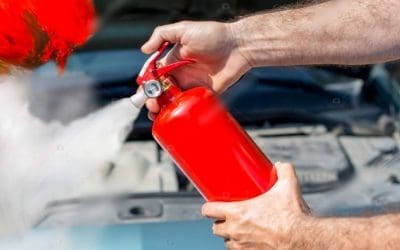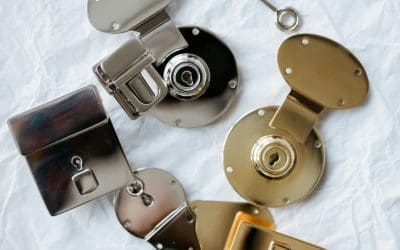When it comes to fire safety, having a Fire Sprinkler System is one of the most effective ways to protect your property and the people in it. But did you know that not all sprinkler heads are the same? Different environments, temperatures, and fire risks require different types of sprinkler heads to perform effectively.
Understanding the various types of fire sprinkler heads helps ensure your Fire Protection System operates efficiently during an emergency. In this guide, we’ll break down the four main types of sprinkler heads, how they work, and how proper Fire Sprinkler Maintenance keeps them performing at their best.
Why Fire Sprinkler Systems Matter
Before diving into the types, let’s understand why a Fire Sprinkler System is so crucial. Sprinklers are designed to detect and suppress fires automatically, minimizing damage and giving occupants time to escape safely.
According to the National Fire Protection Association (NFPA), having an active fire sprinkler system can reduce property damage by up to 70% and lower the risk of fatalities significantly.
But for your Fire Protection System to work properly, you need the right type of sprinkler head installed for your building’s environment and hazard level, and consistent maintenance to ensure they respond when needed.
Types of Fire Sprinkler Heads
Every sprinkler head has a unique design, spray pattern, and activation temperature. The four most common types are:
1. Pendant Fire Sprinkler Heads
Pendent sprinklers are the most common type found in commercial buildings, offices, and residential spaces. They hang down from the ceiling with a circular deflector that disperses water in a broad, circular pattern.
Best For:
-
Offices, retail spaces, and homes with finished ceilings
-
General coverage in open areas
Key Features:
-
Aesthetically pleasing and can be concealed within the ceiling
-
Provides wide and even water distribution
-
Often equipped with decorative covers
Maintenance Tip:
Include pendant sprinklers in your regular Fire Sprinkler Maintenance plan to check for corrosion or blockages caused by dust or paint buildup.
2. Upright Fire Sprinkler Heads
As the name suggests, upright sprinklers are mounted on top of pipes, facing upward. When activated, they spray water upward, which then falls in a circular pattern to cover the area below.
Best For:
-
Warehouses, factories, or areas with exposed ceilings
-
Spaces with obstacles that could block downward water flow
Key Features:
-
Durable and suitable for harsh environments
-
Ideal for high-ceiling or industrial applications
-
Less prone to accidental damage since they’re above pipes
Maintenance Tip:
Inspect upright sprinklers for obstructions such as storage racks or machinery that could affect water dispersion. Regular Fire Sprinkler System testing ensures they remain clear and responsive.
3. Sidewall Fire Sprinkler Heads
Sidewall sprinklers are installed horizontally on walls, typically where ceiling-mounted sprinklers aren’t practical. They spray water in a half-circle pattern, covering the area below and to the sides.
Best For:
-
Hallways, hotel rooms, small offices, and corridors
-
Spaces with decorative or architectural ceiling designs
Key Features:
-
Mounted along walls instead of ceilings
-
Effective for narrow or confined spaces
-
Easy to install in retrofit projects
Maintenance Tip:
During Fire Sprinkler Maintenance, ensure sidewall sprinklers are unobstructed by furniture, curtains, or light fixtures. Even minor obstructions can reduce their effectiveness.
4. Concealed Fire Sprinkler Heads
Concealed sprinklers are designed to blend seamlessly with modern interiors. They are hidden behind a decorative plate that falls away when exposed to heat, allowing the sprinkler to activate.
Best For:
-
High-end residential buildings, hotels, and offices
-
Spaces requiring both fire protection and aesthetic appeal
Key Features:
-
Discreet design complements modern décor
-
Operates at specific temperature thresholds (usually 135°F to 170°F)
-
Cover plate drops when triggered by heat before activation
Maintenance Tip:
Because these heads are hidden, routine Fire Sprinkler Maintenance is essential to ensure the cover plates function correctly and the activation mechanism isn’t obstructed.
How to Choose the Right Sprinkler Head
Choosing the right sprinkler head depends on several key factors:
1. Building Type and Layout:
For open ceilings, choose upright sprinklers.
2. Aesthetic Requirements:
If appearance matters, concealed heads protect without compromising design.
3. Fire Risk Level:
Industrial or high-risk facilities need rugged, high-coverage sprinklers like upright models.
4. Building Code Compliance:
Always consult local fire codes and have professionals inspect and approve your system.
5. Maintenance Accessibility:
Choose sprinklers that can be easily inspected and tested as part of your Fire Protection System plan.
Fire Sprinkler Maintenance: Why It’s Critical
Even the best Fire Sprinkler System won’t work if it isn’t properly maintained. Routine Fire Sprinkler Maintenance ensures all heads and control valves function correctly, pressure levels remain consistent, and there are no leaks or obstructions.
Regular Maintenance Tasks Include:
-
Visual inspection of sprinkler heads and piping
-
Checking for leaks, corrosion, or mechanical damage
-
Testing alarms, water pressure, and valve function
-
Cleaning or replacing dirty or painted sprinkler heads
-
Scheduling professional inspection and system testing at least annually
A neglected sprinkler can fail to activate or deliver enough water pressure during an emergency, compromising your entire Fire Protection System.
The Role of a Fire Protection System
A Fire Protection System is more than just sprinklers. It’s an integrated network of alarms, detectors, control valves, and suppression devices that work together to prevent and minimize fire damage.
An efficient system includes:
-
Automatic Fire Sprinkler Systems for suppression
-
Smoke and Heat Detectors for early warning
-
Alarm Systems for emergency alerts
-
Manual Pull Stations and Fire Extinguishers for manual control
Routine inspections and testing of these components are vital to ensure every piece functions properly when seconds matter.
Conclusion: Protect Your Property with Reliable Fire Safety Solutions
Whether you need pendant, upright, sidewall, or concealed sprinklers, choosing the right type is essential to ensure maximum protection. Pairing your selection with consistent Fire Sprinkler Maintenance and regular Fire Systems Inspection will keep your Fire Protection System in peak condition year-round.
At WFX, we specialize in designing, installing, and maintaining comprehensive Fire Sprinkler Systems that safeguard lives and property. From selecting the right sprinkler heads to ensuring full compliance with fire safety standards, our experts provide complete peace of mind. Trust WFX to protect what matters most because when safety is on the line, every second counts.
FAQs About Fire Sprinkler Heads
1. How often should fire sprinkler systems be inspected?
You should schedule a Fire Sprinkler Maintenance inspection at least once a year. Some facilities, like hospitals or industrial plants, may require quarterly inspections based on safety codes.
2. Can I paint over fire sprinkler heads?
No. Painting or covering sprinkler heads can block heat detection and delay activation. Always keep sprinkler heads clean and unpainted.
3. How long do fire sprinkler heads last?
Most sprinkler heads can last 20–50 years with proper maintenance. However, regular Fire Sprinkler System inspections help identify corrosion or wear early, extending their lifespan.
4. What triggers a fire sprinkler to activate?
Contrary to popular belief, sprinklers don’t all go off at once. Each sprinkler head activates individually when its heat-sensitive element reaches a specific temperature, usually between 135°F and 165°F.




